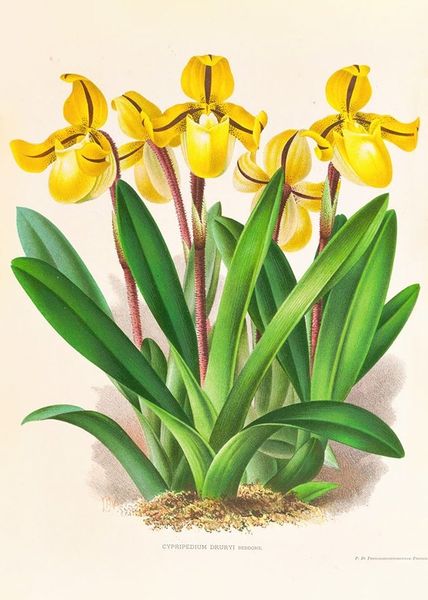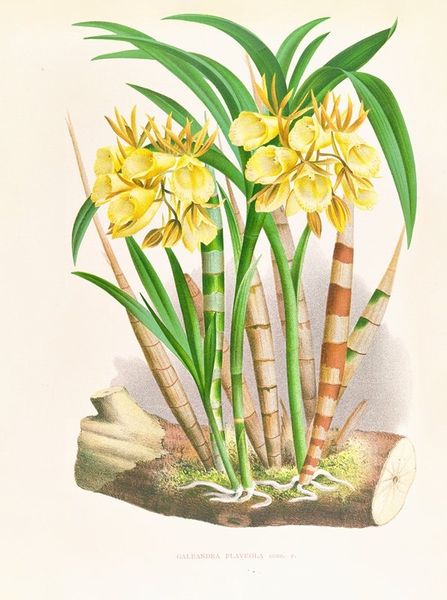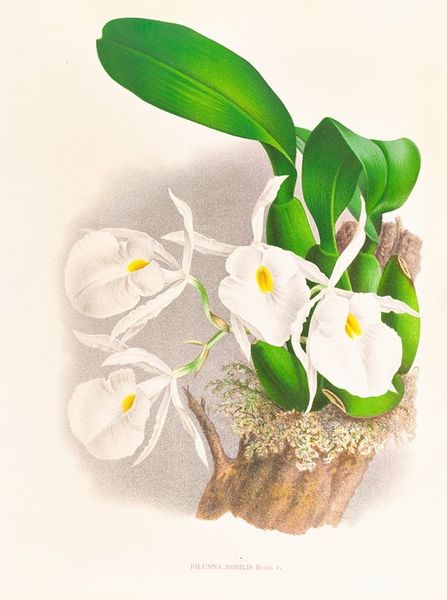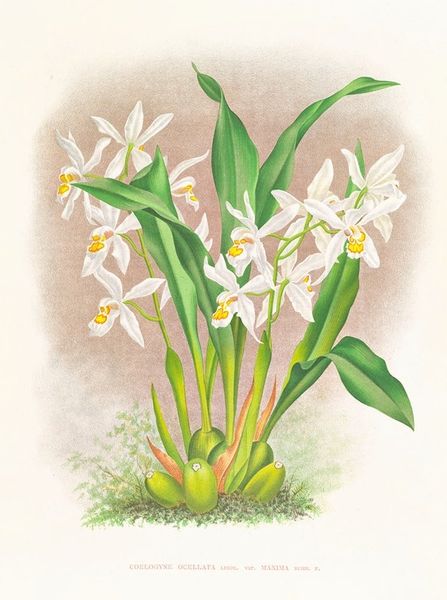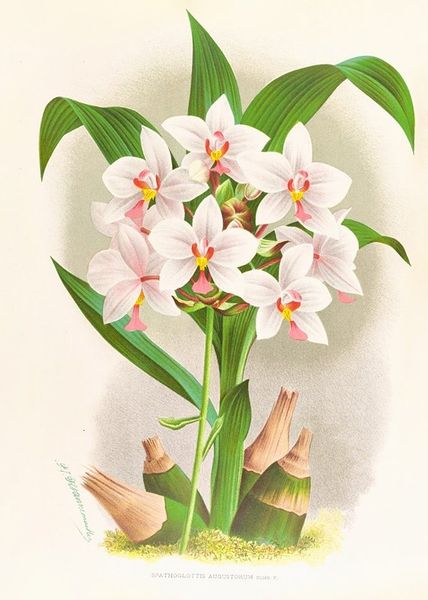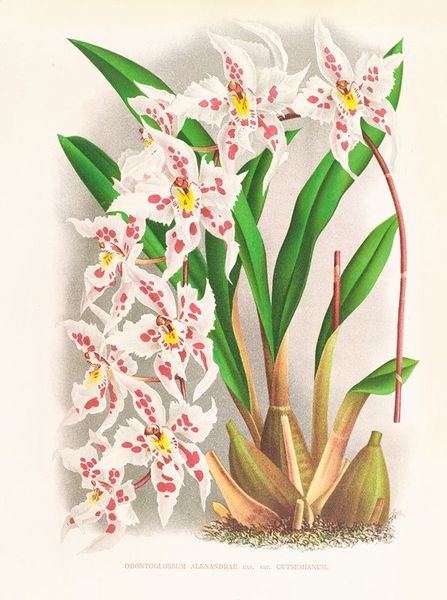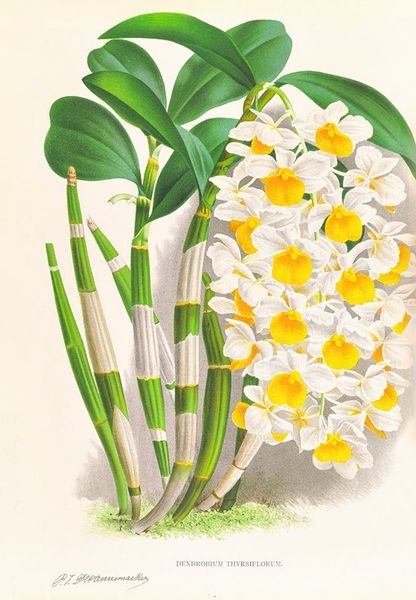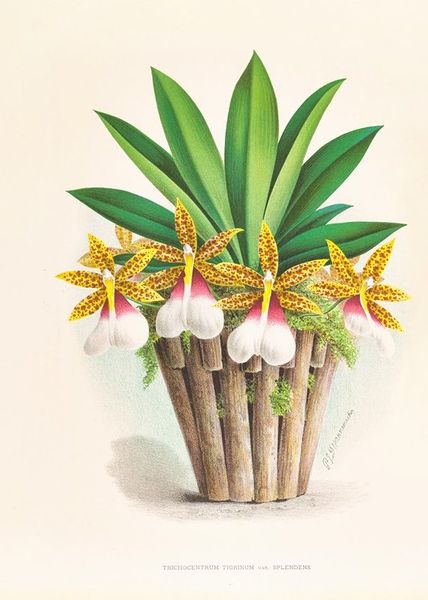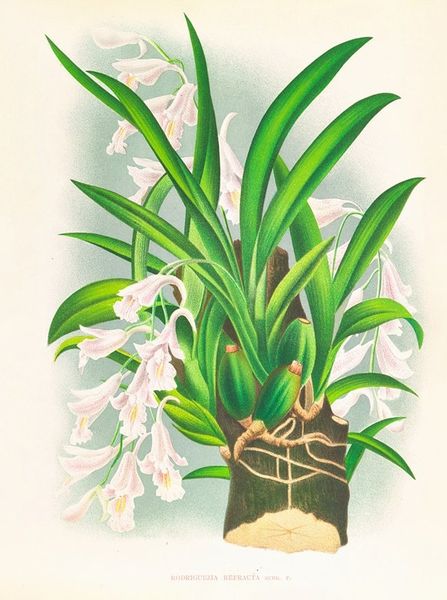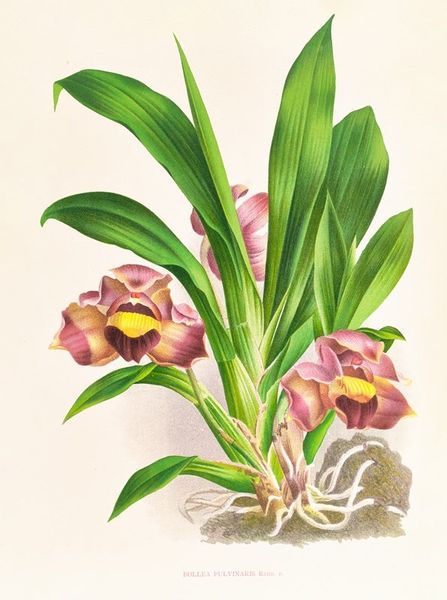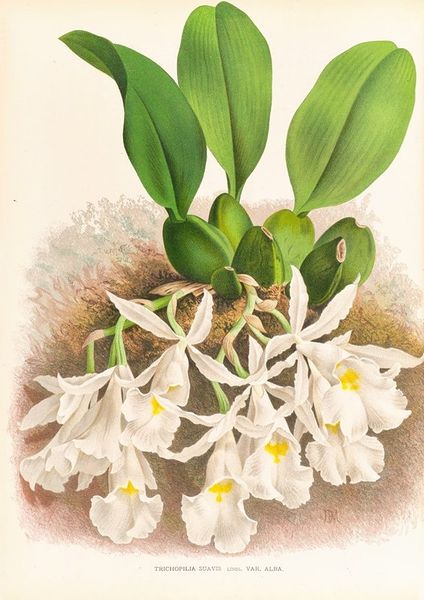
Copyright: Public Domain: Artvee
Jean Jules Linden created this botanical illustration of Oncidium warscewiczi using lithography. This printmaking technique involves drawing with a grease-based crayon onto a flat limestone or metal plate, then chemically treating it so that ink adheres only to the drawn areas. The plate is then pressed against paper, transferring the image. The lithographic process allows for the reproduction of intricate details, capturing the subtle textures and vibrant colors of the orchid. Notice how the density of marks creates shading and volume in the leaves, stems, and delicate yellow flowers. The technique demanded collaboration – not only the artist, but also skilled stone preparers and printers who understood the chemical properties of the materials, and the mechanics of the press. The mass reproducibility of lithography allowed botanical imagery, previously only accessible to the wealthy, to become more widely distributed, contributing to broader scientific knowledge, and a shared appreciation of natural beauty. The process blurred the lines between art, science, and industry, making it an essential medium for disseminating information and shaping visual culture in the 19th century.
Comments
No comments
Be the first to comment and join the conversation on the ultimate creative platform.
